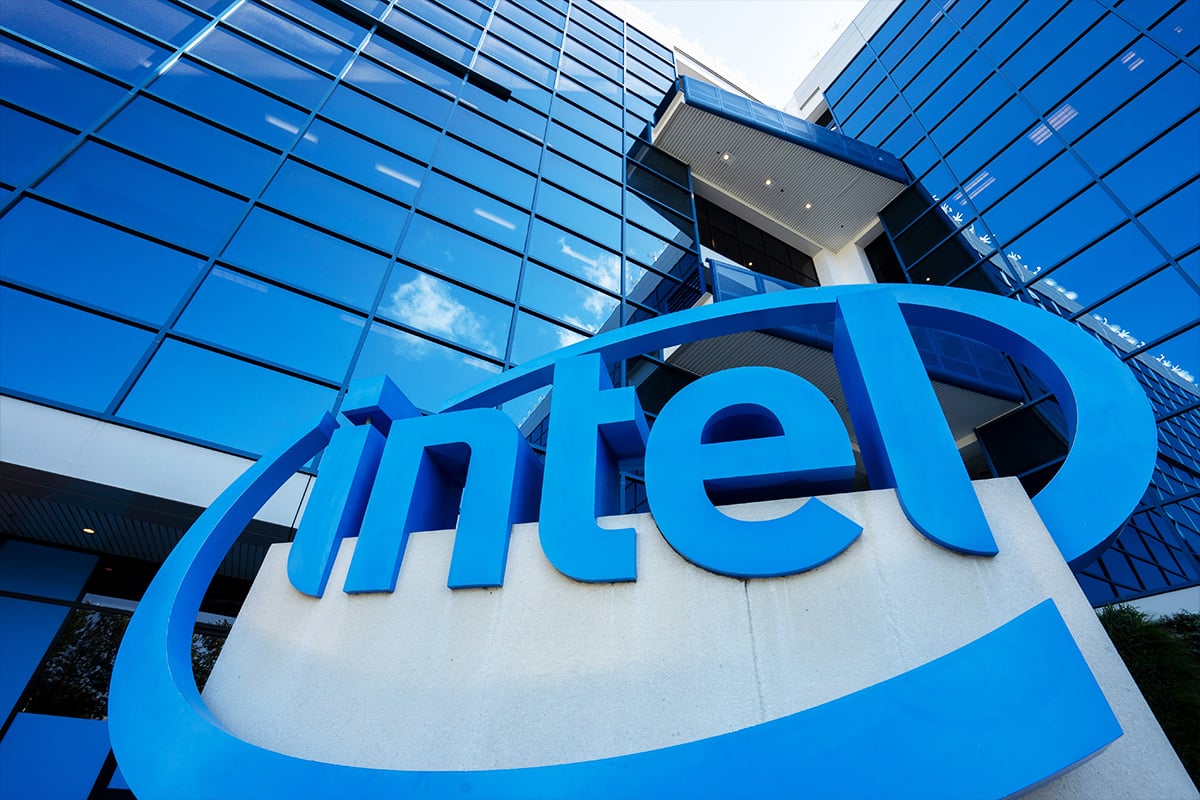TLDR
- Intel shares jumped 9% in premarket trading after beating third-quarter revenue expectations with $13.65 billion versus $13.14 billion estimated.
- The U.S. government became Intel’s top shareholder in August 2025 with a 10% stake through an $8.9 billion investment negotiated by the Trump administration.
- Intel received multi-billion-dollar investments from Nvidia and SoftBank, with Nvidia taking a $5 billion stake in September 2025.
- CEO Lip-Bu Tan’s cost-cutting efforts included slashing over 20% of the workforce, reducing headcount from 124,100 to 88,400 employees year-over-year.
- Intel stock has rebounded 90% in 2025, outperforming both Nvidia and AMD, though the company warns its advanced 18A manufacturing process won’t reach acceptable yield levels until 2027.
Intel shares jumped nearly 9% in premarket trading Friday after the chipmaker reported third-quarter revenue of $13.65 billion. That beat analyst estimates of $13.14 billion.
The company posted adjusted earnings of 23 cents per share. Net income came in at $4.1 billion, or 90 cents per share, compared to a net loss of $16.6 billion in the same quarter last year.
BREAKING: Intel stock, $INTC, surges over +6% after reporting stronger than expected Q3 2025 earnings.
The stock is now trading above $40/share for the first time since April 2024.
The Trump Administration is up nearly +100% on their Intel purchase since August. pic.twitter.com/Roh6eJQnIO
— The Kobeissi Letter (@KobeissiLetter) October 23, 2025
This marks Intel’s first earnings report since the U.S. government became its largest shareholder. The Trump administration negotiated an $8.9 billion investment in August 2025, purchasing 433.3 million shares at $20.47 per share for a 10% stake.
Intel received $5.7 billion from the government during the third quarter. The company recorded a per-share loss of 37 cents to account for shares in escrow that will be released to the U.S. government.
CEO Lip-Bu Tan told investors the company is committed to advancing the Trump administration’s vision to restore semiconductor production. The government partnership represents a key piece of Intel’s turnaround strategy.
The results come after a brutal 2024 that saw Intel post its first annual loss in nearly four decades. The company has struggled with manufacturing setbacks and fierce competition in the chip market.
Major Investments Provide Financial Cushion
Intel secured a $5 billion investment from Nvidia in September 2025. The deal includes integrating Intel’s central processors alongside Nvidia’s AI graphics processors, which control 90% of the AI chip market.
Japan’s SoftBank also invested in the company during this period. These investments, combined with the government stake, have provided financial support as Intel works to regain stability.
Intel’s stock has rebounded more than 90% in 2025. The gains outpaced AI chip leaders Nvidia and AMD during the same period.
However, Intel trades at a 12-month forward price-to-earnings ratio of 71.51. That compares to 30.49 for Nvidia and 40.14 for AMD.
Ben Bajarin, CEO of Creative Strategies, said Intel has turned a corner. He called it a strong setup for 2026.
Intel reported demand for its chips is outpacing supply. The trend is particularly strong in data centers where operators are upgrading CPUs to support AI workloads.
The company’s Client Computing Group generated $8.5 billion in sales. Data center CPUs brought in $4.1 billion, down 1% year-over-year.
Cost Cuts and Manufacturing Challenges
Tan has implemented aggressive cost-cutting measures since taking over. The company has reduced its workforce by more than 20%, dropping from 124,100 employees to 88,400 year-over-year.
The CEO also sold a majority stake in Intel’s Altera subsidiary. He has shifted the company’s capital strategy to rely more on external commitments rather than heavy internal spending.
Intel has scaled back its manufacturing ambitions under Tan’s leadership. Intel Foundry, which makes chips for other companies, reported $4.2 billion in sales during the quarter, down 2% annually.
The foundry division requires $100 billion in capital investment. It has not yet secured a major customer outside of Intel itself.
Finance chief Dave Zinsner cautioned that yields for Intel’s advanced 18A manufacturing process remain below industry standards. They won’t reach acceptable levels until 2027.
Intel started production of its most advanced chips in Arizona during the quarter. The company expects to guide fourth-quarter revenue to $13.3 billion at the midpoint with adjusted earnings of 8 cents per share.
Analysts at Bernstein warned the turnaround is far from over. They suggested it might be better to call it a draw for now rather than claiming victory.
Intel met with the Securities and Exchange Commission to gain approval for its accounting treatment of the government investment. The company doesn’t have an answer yet due to the shutdown and may revise results in the future.






